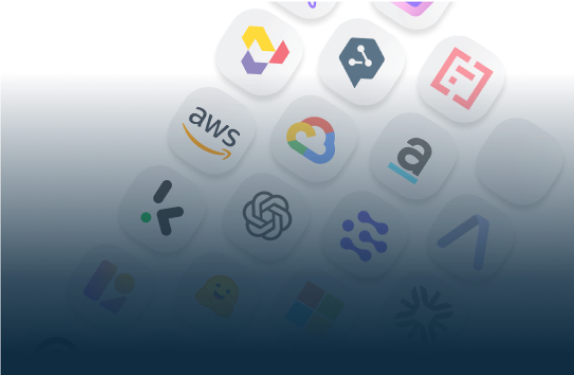
Start Your AI Journey Today
- Access 100+ AI APIs in a single platform.
- Compare and deploy AI models effortlessly.
- Pay-as-you-go with no upfront fees.
Unlock the power of Retrieval-Augmented Generation (RAG)! Learn how to combine language models with retrieval systems to boost response accuracy and relevance. Build a RAG backend using FastAPI, Eden AI, and top AI tools like OpenAI and Qdrant.

Language models are smart, but they don’t always know everything—especially when real-time or domain-specific knowledge is needed.
Enter Retrieval-Augmented Generation (RAG): a powerful paradigm that combines large language models (LLMs) with information retrieval systems to provide smarter, more relevant, and grounded responses.
In this tutorial, based on our in-depth Youtube Tutorial, we’ll build a full-featured RAG backend using FastAPI, Eden AI, and some of the most powerful AI tools on the market (like OpenAI, Qdrant, and more).
You can watch our detailed tutorial to see the full breakdown and follow the step-by-step instructions, where we’ll guide you through every stage of the process—from setting up the environment to deploying a robust backend solution, ensuring you understand each concept and its application.
Whether you're a developer looking to add smart Q&A to your app, or an ML enthusiast curious about how RAG works under the hood, you're in the right place.
We're going to build a complete backend RAG system that allows you to:
Let’s start with the basic setup:
We’re importing the essential FastAPI classes and tools for building APIs, along with requests for making HTTP requests to Eden AI, and os for accessing environment variables.
We also bring in Pydantic models and some typing utilities:
These help with defining clear and structured request/response models.
We load the API key from environment variables:
This ensures the key is securely managed and not hardcoded. Replace your_default_key_here with a safe fallback or manage securely via .env in production.
Now we define the base URL for the Eden AI RAG endpoint and a helper to attach authorization headers to all outgoing requests:
This initializes our FastAPI app with a title and description. Useful for auto-generated docs at /docs.
Add CORS middleware to allow frontend access:
This is crucial for development and integration with frontend apps like React or Vue.
Here we define Pydantic models that structure our incoming requests.
These parameters allow for deep customization of how data is chunked, embedded, and stored.
This endpoint creates a new RAG project in Eden AI. It serializes your form input to JSON and sends it off.
Endpoints to list, retrieve, and delete projects:
You can use these to monitor or clean up your project space.
This will trigger OCR (if needed), and chunking + embeddings generation via Eden AI.
This is especially useful for adding data programmatically, like injecting FAQ content or scraping URLs.
This is where you can define the "personality" of the chatbot or assistant:
This is your system prompt — telling the LLM how to behave. You can also pass temperature or max_tokens via params.
This endpoint is the core of the RAG system — it retrieves relevant chunks from the vector DB and feeds them into the LLM as context before answering your query.
To support chat-based UIs, we manage conversations too:
You can also retrieve, delete, or continue an ongoing thread of dialogue using history.
Need to clean up?
You can also query data directly:
Perfect for admin dashboards or sanity checks.
Let’s say you want to build a legal document assistant:
Retrieval-Augmented Generation is the next evolution in how we interact with AI. By combining structured knowledge retrieval with powerful LLMs, we’re giving our apps superpowers—from legal document search, to customer support chatbots, to custom research assistants.
This blog and our [YouTube tutorial] give you everything you need to get started. Whether you’re building tools for work, school, or fun, a solid RAG backend like this is your foundation.
If you're hungry for more, consider expanding this into:
Want the full walkthrough with voice, visuals, and step-by-step debugging? Watch the full tutorial on our YouTube channel.


You can start building right away. If you have any questions, feel free to chat with us!
Get startedContact sales
